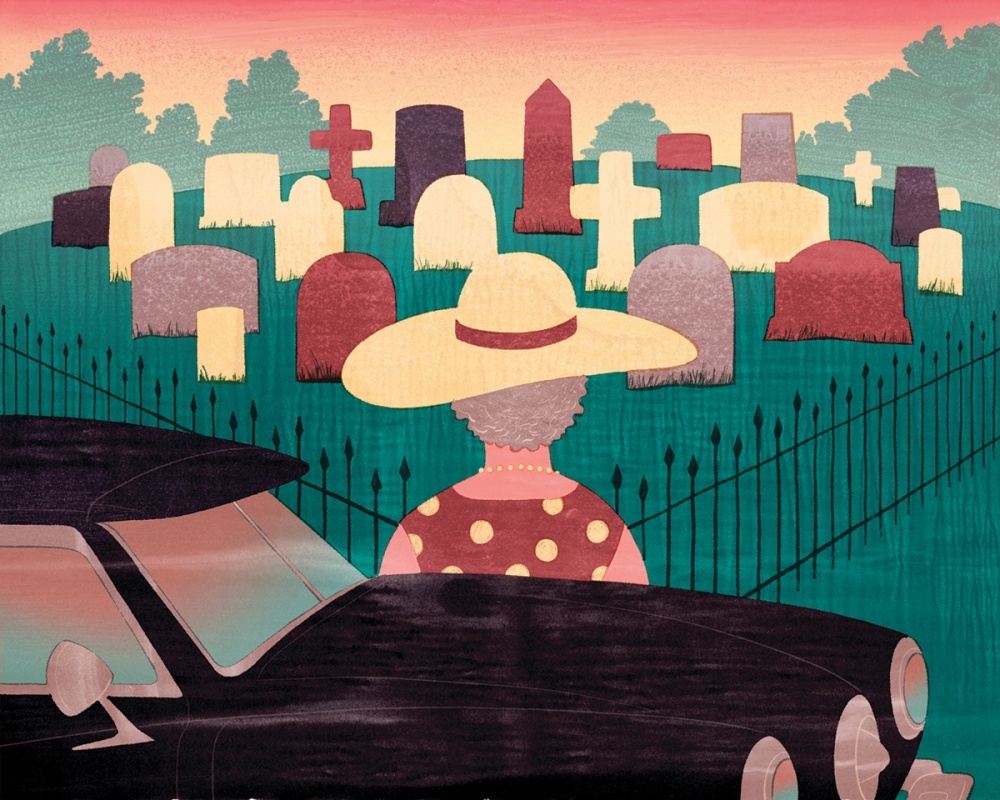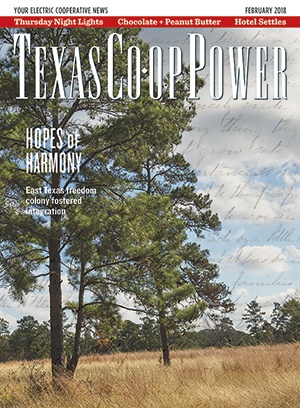I probably owe my affection for country cemeteries to my Grandmother Taylor, who could not pass one without stopping. When I was a small boy, she would take me on drives in her Studebaker Commander along the country roads around Fort Worth, and whenever a cemetery would come into view, she would say, “Let’s just stop and see who’s in there.” As near as I can remember, she never knew any of the occupants. She just liked to tut over the dead babies and admire the irises and roses on the graves.
I once knew a wealthy Houston lady who bought a country place near La Grange. Like my grandmother, she liked old cemeteries and thought her place should have one, but the previous owners had neglected to bury anyone there. She was an observant person and she noticed that many of the cemeteries in the area had a mixture of older marble and limestone tombstones and newer red granite markers, but that the death dates on the granite markers were often in the 19th century. She inquired around and learned that Sonny Stoltz, the stonecutter in La Grange, had gone around the countryside in the 1950s urging families to replace their old grave markers with modern granite ones, and that he had a big pile of old markers that he had replaced behind his shop. She bought a dozen of them and had Sonny set them up for her. She added some lengths of iron fence and—bingo!—her place had an old family cemetery on it. Someday it will drive a team of archaeologists crazy—the cult of the missing corpses.
I prefer my cemeteries to be real. Not long ago, my wife and I were driving back to Fort Davis from Denton on a series of back roads. Somewhere between Jacksboro and Graham, we passed a sign pointing down a dirt road that read “Dark Corner Cemetery.” That’s my kind of graveyard. Over the years, I’ve encountered other cemeteries with memorable names. There is Lonesome Dove Cemetery in Tarrant County, inspired, I think, not by Larry McMurtry’s novel or the television series but by the dove that Noah sent out from the ark. Over in East Texas there is Little Hope Cemetery, possibly a comment on the heavenly aspirations of its residents. Near Austin there is a Nameless Cemetery, which serves a community also called Nameless, due to the inability of its first settlers to agree on a name.
Between 1880 and 1920, the sentimental rhymed epitaph was very much in fashion, and tombstone cutters had books of these verses in their workshops. The Lanham Mill Cemetery in Somervell County, southwest of Fort Worth and a favorite stopping place of my grandmother’s, is chock-full of these.
I once copied down a few in a notebook. One reads, “A loved one from us is gone / A voice we loved is stilled / A place is vacant in our home / Which never can be filled.” An infant’s marker bears the inscription, “Sleep on sweet babe / and take thy rest / God called thee home / He thought it best.”
Over in the next county, at Acton, the inscriptions are more laconic. I recorded one there that simply read, “Well, I must go home.” A finger pointing skyward over the words indicated where home was. The lingering presence of a loved one who has died is nowhere more vividly captured than on a stone at the Macedonia Cemetery in Brazos County: “He is just around the corner a little out of sight.”
Austin raconteur Frank Oltorf used to tell about the Sunday afternoon walks his uncle Tom Bartlett would take his children and nieces and nephews on through Calvary Cemetery in their hometown of Marlin, stopping at each grave and commenting on the history of its occupant. One concrete headstone was cast in the shape of an electric light pole to commemorate a man who had met his death while replacing a faulty wire for the local utility company. Bartlett always said that this was a dangerous precedent, opening the way for a series of markers in the shape of whiskey bottles. I never encountered any electric poles in my cemetery explorations, but I have found tombstones that had references to the deceased’s occupation on them. At High Hill in Fayette County, several stones are ornamented with carpenter’s planes, chisels, hammers, and, in one case, a blacksmith’s anvil.
There is an extreme example in the cemetery at Seymour, where a rancher named W.H. Portwood is commemorated in a large marble bas-relief that depicts him approaching the Pearly Gates on horseback, leading a pack mule, with St. Peter standing nearby extending a welcoming hand. Portwood was a wealthy man, and the inclusion of the pack mule is an indication that he intended to take at least some of it with him.
The last word, however, is in the Florida Chapel Cemetery at Round Top, where the headstone of a schoolteacher who was known for her loquacity bears the inscription: “She finally stopped talking.”
Lonn Taylor is a writer and historian who lives in Fort Davis. Excerpted from Texas, My Texas: Musings of the Rambling Boy, TCU Press [Original column: January 27, 2005].


